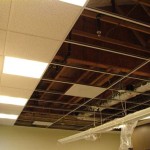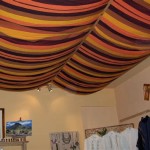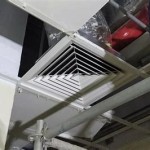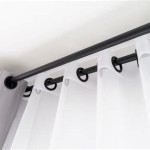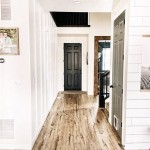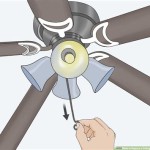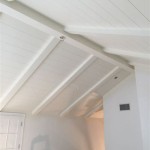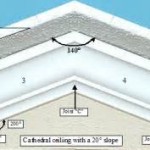Can You Put Wallpaper On Drop Ceiling Tiles? A Comprehensive Guide
Drop ceilings, also known as suspended ceilings, are a common feature in commercial buildings, basements, and even some residential spaces. They offer a practical solution for concealing ductwork, pipes, and wiring while providing easy access for maintenance and repairs. However, the standard appearance of drop ceiling tiles can be aesthetically unappealing. This has led many to consider alternative surface treatments, with wallpaper being a frequently proposed option. The feasibility and advisability of applying wallpaper to drop ceiling tiles involve several factors, including tile material, adhesive choice, and environmental considerations. This article will provide a detailed exploration of these aspects, offering guidance on whether and how to successfully wallpaper drop ceiling tiles.
Understanding Drop Ceiling Tile Materials
Before considering wallpaper application, it is crucial to understand the composition of the drop ceiling tiles. The most common types of drop ceiling tiles are mineral fiber, fiberglass, and gypsum. Each material possesses unique characteristics that affect its suitability for wallpapering.
Mineral fiber tiles are typically the most porous and absorbent. They are made from recycled paper, fiberglass, and other mineral materials. This porous nature makes them highly susceptible to moisture absorption, which can significantly impact the adhesion of wallpaper and potentially lead to tile damage or degradation over time. Applying a wallpaper to a standard, untreated mineral fiber tile without proper preparation is likely to result in the wallpaper peeling, bubbling, or detaching entirely.
Fiberglass tiles offer better moisture resistance than mineral fiber tiles. They are made from woven glass fibers and are usually coated with a vinyl or acrylic facing. This facing provides a smoother surface for wallpaper adhesion and reduces the risk of moisture absorption. However, the texture of the fiberglass tile itself can still present challenges. Without proper surface preparation, the wallpaper may not adhere uniformly, and the texture of the tile may show through the wallpaper.
Gypsum tiles, less common than mineral fiber or fiberglass, consist of a gypsum core faced with paper. These tiles are heavier than mineral fiber tiles and offer better sound insulation. The paper facing provides a relatively smooth surface for wallpapering, but the joints between the tiles may require special attention to prevent the wallpaper from cracking or peeling along these seams. Furthermore, moisture penetration can still be a concern, particularly in humid environments.
Factors Influencing Wallpaper Adhesion
Achieving successful wallpaper adhesion on drop ceiling tiles requires careful consideration of several key factors. These factors include surface preparation, adhesive selection, and environmental conditions.
Surface preparation is paramount for ensuring proper adhesion. Regardless of the tile material, the surface must be clean, dry, and free of dust, grease, and any loose particles. For mineral fiber tiles, a primer specifically designed for porous surfaces is essential. This primer will seal the tile, reducing its absorbency and providing a more stable base for the wallpaper adhesive. For fiberglass tiles, a degreasing agent may be necessary to remove any oils or residues from the vinyl or acrylic facing. Lightly sanding the surface can also improve adhesion by creating a slightly rougher texture. For gypsum tiles, filling any cracks or imperfections along the seams between the tiles is crucial to prevent the wallpaper from cracking or peeling in these areas.
The choice of adhesive is equally important. Traditional wallpaper pastes, particularly those designed for heavy wallpapers, may not be suitable for drop ceiling tiles. These pastes can be too heavy and may cause the tiles to sag or warp, especially in the case of mineral fiber tiles. Instead, consider using a lightweight, pre-pasted wallpaper or a specialized adhesive designed for non-porous surfaces. Pre-pasted wallpapers offer the convenience of being activated with water, reducing the risk of applying too much adhesive. Specialized adhesives, such as those formulated for vinyl or fiberglass, provide superior bonding strength and moisture resistance. It is crucial to follow the manufacturer's instructions carefully when applying the adhesive.
Environmental conditions, particularly temperature and humidity, can significantly impact the adhesion process. High humidity can interfere with the adhesive's ability to dry properly, leading to poor adhesion and potential mold growth. Extreme temperatures can also affect the adhesive's performance. It is recommended to apply the wallpaper in a well-ventilated area with moderate temperature and humidity levels. Allowing sufficient drying time is essential before exposing the wallpaper to fluctuating environmental conditions.
Potential Challenges and Alternatives
While it is possible to apply wallpaper to drop ceiling tiles, it is important to acknowledge the potential challenges and consider alternative solutions. One major challenge is the increased weight added to the ceiling grid system. Wallpaper, especially heavier varieties, can add significant weight to the tiles, potentially straining the grid and causing it to sag or collapse. This is particularly concerning for older or inadequately supported grid systems. It is crucial to assess the load-bearing capacity of the grid before applying wallpaper.
Another challenge is the potential for moisture damage. Even with proper surface preparation and adhesive selection, moisture can still penetrate the wallpaper and reach the tile, leading to mold growth, tile degradation, and wallpaper delamination. This is especially problematic in areas with high humidity or where leaks are possible. Regularly inspecting the ceiling for any signs of moisture damage is crucial.
Due to these challenges, several alternative options for enhancing the appearance of drop ceiling tiles may be more practical and less risky. Painting the tiles is a common and relatively straightforward alternative. Using a paint specifically designed for acoustic tiles can help maintain their sound-absorbing properties. Decorative ceiling tiles are also available in a variety of styles and materials, offering a more permanent and easily installed solution. These tiles can be selected to match the desired aesthetic without the risks associated with wallpaper.
Another approach is to use adhesive-backed vinyl films. These films are lighter than wallpaper and often offer better moisture resistance. They are also easier to install and remove, making them a more flexible option. Finally, consider replacing the existing drop ceiling tiles entirely with more aesthetically pleasing options. This may involve a higher initial cost, but it can provide a long-term solution that enhances the overall appearance of the space without the potential risks associated with applying wallpaper.

Wallpapered Drop Ceiling Update Ceilings With L And Stick Wallpaper

Ceiling Makeover Nesting With Grace

Wallpaper On Drop Ceiling Tiles This Might Look Good With Patterned White

My Next Project I Our Dropped Ceiling Tiles Cover Ugly Drop Panels With Textured Wallpaper And Then Spray Paint Paper Grids

Modern Drop Ceiling Ideas To Love Craving Some Creativity

A Great And Affordable Way To Update Ugly Discolored Drop Tile Ceiling With Only Few Art Supplies Paint Both Latex For Tiles Metallic The Metal Spacers Wallpaper

11 Ways To Cover A Hideous Ceiling That Anyone Can Do

How To Make A Drop Ceiling Look Better

How To Make A Drop Ceiling Look Better

Change The Look Of Your Drop Cei Dropped Ceiling Tiles
Related Posts

